This post may contain affiliate links. See my disclosure policy.
This baked salmon recipe features lemon, butter, fresh garlic, and honey for an easy and flavorful, oven-cooked dinner with easy cleanup. Ready in under 20 minutes, it’s simple to prepare and perfect for a quick weeknight meal.
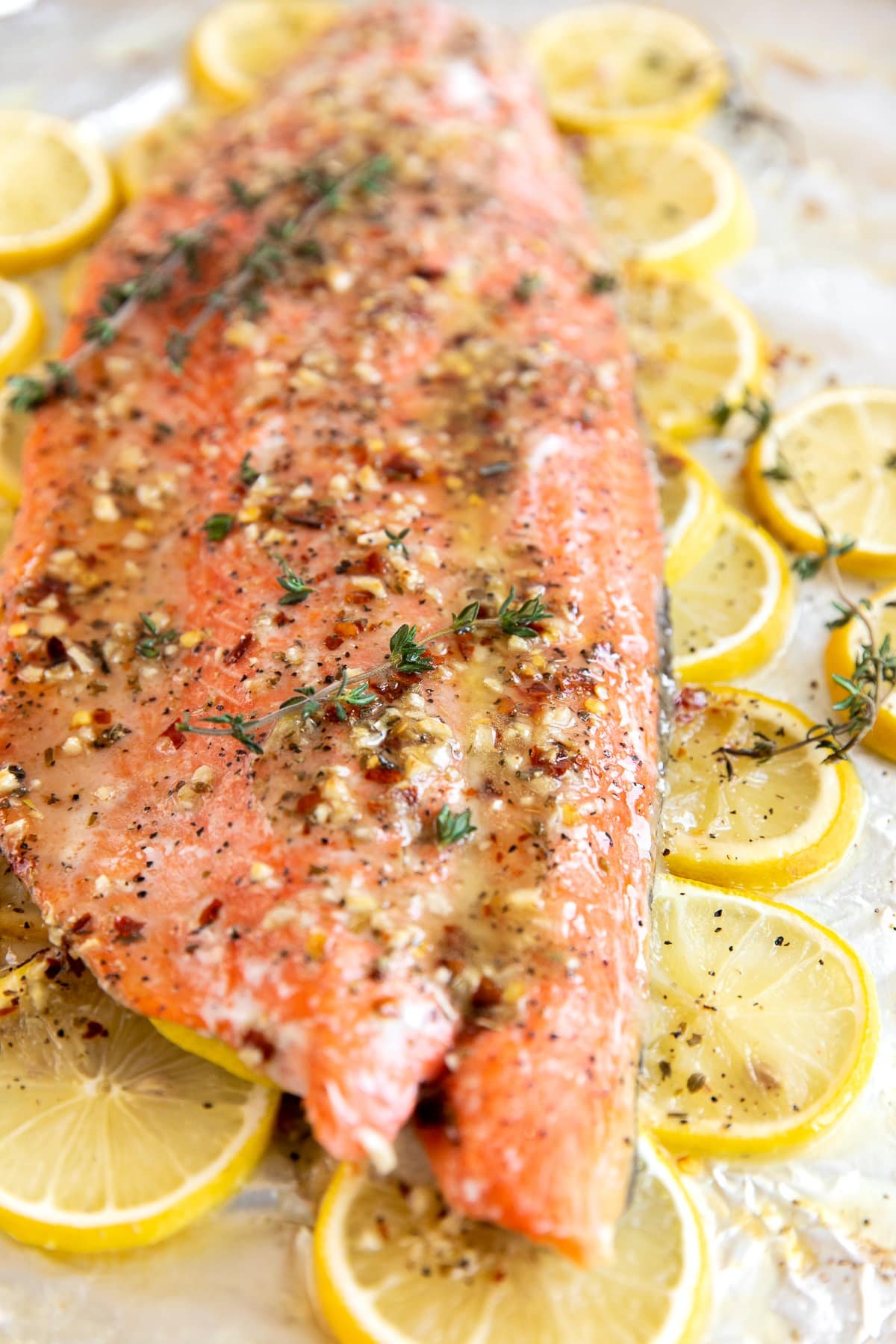
This Baked Salmon Recipe is Ready in 20-Minutes

Salmon is naturally flavorful, nutritious, quick to cook, and my go-to solution for easy, stress-free weeknight dinners. Typically, it’s one of the pricier items on a restaurant menu; it’s so much cheaper to make at home.
This oven-baked salmon recipe is a great place to start if you’re just learning how to cook fish at home. I love this easy recipe for so many reasons – and I’m pretty sure you will, too!
A whole salmon fillet is baked in the oven over a bed of thinly sliced lemons and topped with an irresistible lemon butter sauce. It’s naturally gluten-free and perfect with a side of coconut rice and roasted asparagus or fluffy Jasmine rice and sautéed zucchini. Leftovers are delicious for lunch or dinner the next day on top of salad or stir-fried with leftover rice and eggs.
Enjoy!
Readers agree this is the best baked salmon recipe; easy, flavorful, and restaurant-quality. Here’s what Pearl had to say:
“The BEST salmon recipe I have tried, and I have tried a few. The lemons under the salmon is truly delicious. Thanks for sharing your recipe.”
– Pearl
Table of Contents
- This Baked Salmon Recipe is Ready in 20-Minutes
- How to Make it
- How to Bake Salmon in the Oven
- How Long to Bake Salmon?
- How to Tell When Salmon Is Done
- What are the Five Types of Salmon?
- Expert Tips for the Best Baked Salmon
- Recommended Sides
- Frequently Asked Questions
- More Salmon Recipes
- Best Oven-Baked Salmon Recipe
- More Salmon Recipes
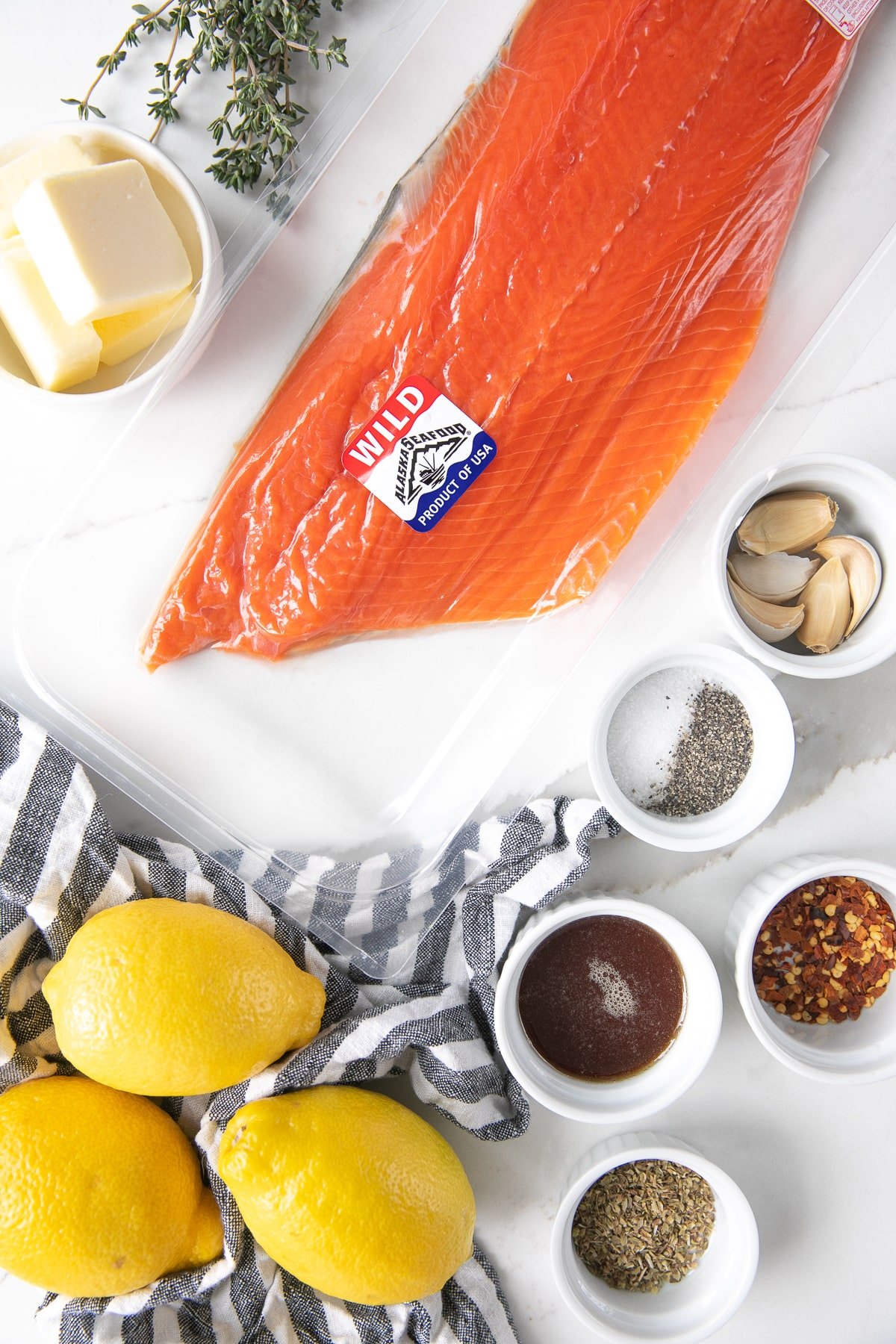
How to Make it
For the full printable recipe, jump to the recipe card below.
Ingredients You’ll Need
Here’s what you need to make this easy, flavorful baked salmon recipe. No marinating required!
- Salmon: You’ll need a large salmon fillet, which is essentially one side of the fish. It typically comes with the skin still on the bottom and the signature vibrant pink flesh on top. At the seafood counter, just ask for a 2½-pound salmon fillet and they’ll know exactly what you mean. I purchased mine at Costco. There are several types of salmon to choose from, and we’ll cover those in more detail below.
- Butter: Melted butter forms the base of the glaze. It helps keep the salmon tender and adds richness that pairs perfectly with the honey and garlic.
- Honey: A touch of honey brings just the right amount of natural sweetness and helps the top of the salmon caramelize as it bakes.
- Lemons: You’ll use both the juice and thin slices of fresh lemon. The juice adds brightness to the glaze, while the slices infuse the salmon with a subtle citrus flavor as it bakes.
- Garlic Cloves: Fresh garlic gives the glaze its bold, aromatic punch. It’s an essential part of the flavor profile, so go for fresh rather than pre-minced if possible.
- Seasonings and herbs: A combination of homemade Italian seasoning, red chili flakes, salt, and black pepper adds balanced, well-rounded flavor to the salmon. Omit the red chili flakes if you’re sensititve to spice.
How to Bake Salmon in the Oven
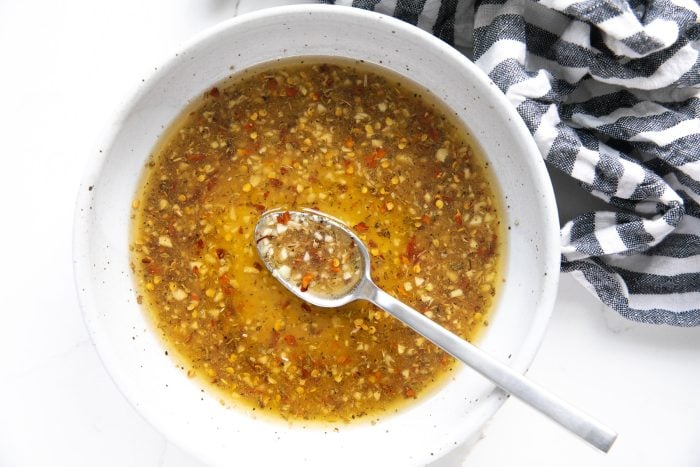
- Bring the salmon to room temperature and pat dry with paper towels. Preheat the oven to 400 degrees F. Whisk together the ingredients for the lemon butter sauce.

- Line a large baking sheet with foil (or parchment paper) and layer with thinly sliced lemon. Place the salmon directly on top of the lemon slices, skin-side-down.

- Pour the lemon butter sauce over the top of the salmon. Bake for approximately 8-12 minutes, or until the internal temperature reaches 145 degrees F.

- Remove from the oven and garnish with fresh thyme or chopped parsley, if desired.
How Long to Bake Salmon?
Baking time depends on the thickness of the salmon, your oven’s temperature, and whether you’re using a standard or convection oven.
As a general rule, bake salmon at 400°F for 4–6 minutes per ½-inch of thickness. Most fillets are approximately 1 inch thick, so plan for a total cooking time of 8–12 minutes. Thicker fillets will need a few extra minutes, while individual portions cook faster than a whole side.
Tip: If using a convection oven, reduce the total cooking time by up to 30%, as heat circulates more efficiently (in the same way an air fryer does).
Jessica Says
How to Tell When Salmon Is Done
Salmon is done when the flesh flakes easily with a fork and turns opaque in the center. For the most accurate results, use an instant-read thermometer inserted into the thickest part:
- 135°F for wild salmon or a softer, more tender texture
- 140–145°F for firmer, fully cooked salmon
The USDA recommends 145°F, but keep in mind that salmon continues to cook slightly after being removed from the oven.
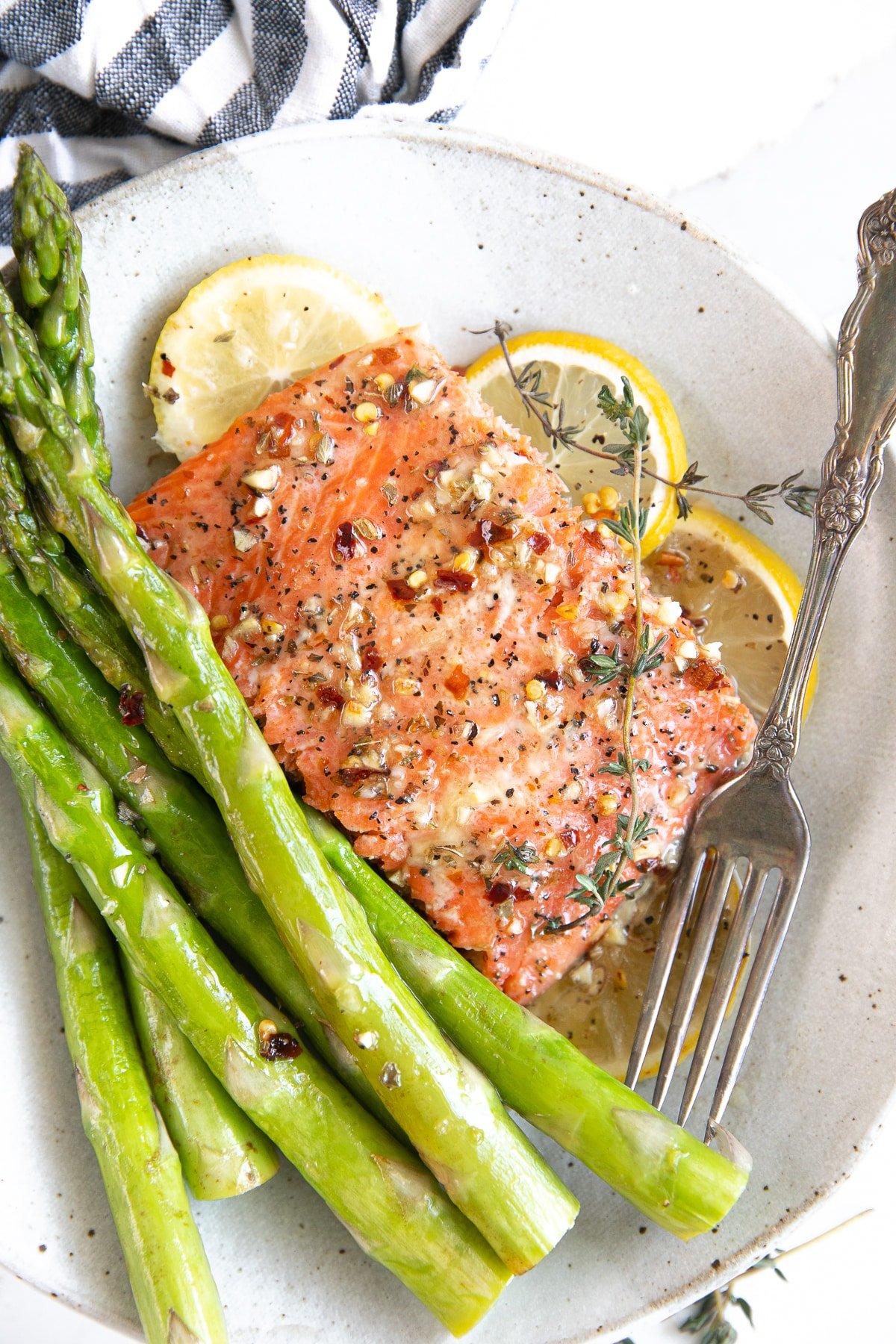
What are the Five Types of Salmon?
If you’re shopping for salmon and wondering which type to choose, you’re not alone. When I first started cooking salmon at home, I had no idea there were different types or that they could taste so different.
In the U.S., all wild-caught Pacific salmon fall under five main types. Each has a distinct flavor, texture, and fat content. I love king salmon, but I almost always use frozen & thawed sockeye salmon from Whole Foods (the salmon pictured in this recipe was purchased “fresh” from Costco).
Here are the five types of Pacific salmon, all native to North American waters:
- King (Chinook) Salmon: The largest and most prized salmon variety. Rich, high in fat, and buttery in texture, it’s ideal for baking or grilling. Often considered the best tasting, it’s also the most expensive.
- Sockeye (Red) Salmon: Known for its bright red flesh and bold, full flavor. Leaner than King but holds up well to roasting or broiling. Great for those who prefer a stronger, more robust flavor.
- Coho (Silver) Salmon: Milder and with moderate fat, Coho has a delicate texture and balanced flavor. A versatile, affordable option that works well baked, grilled, or pan-seared.
- Pink Salmon: The smallest and most common. Light in color, soft in texture, and low in fat. It’s often canned, but it works well in budget-friendly dishes.
- Chum (Dog) Salmon: Less popular, Chum has pale flesh, a mild flavor, and a firm, lean texture. Commonly used in frozen products and a primary source of salmon roe (ikura).
What About Farmed Atlantic Salmon?
While the five main types of wild salmon are all Pacific species, Atlantic salmon sold in the U.S. is almost always farm-raised. Wild Atlantic salmon is extremely rare due to overfishing and conservation protections.
Farmed Atlantic salmon is mild in flavor, high in fat, and has a soft, rich texture. It’s widely available, more affordable than wild varieties, and less prone to drying out.
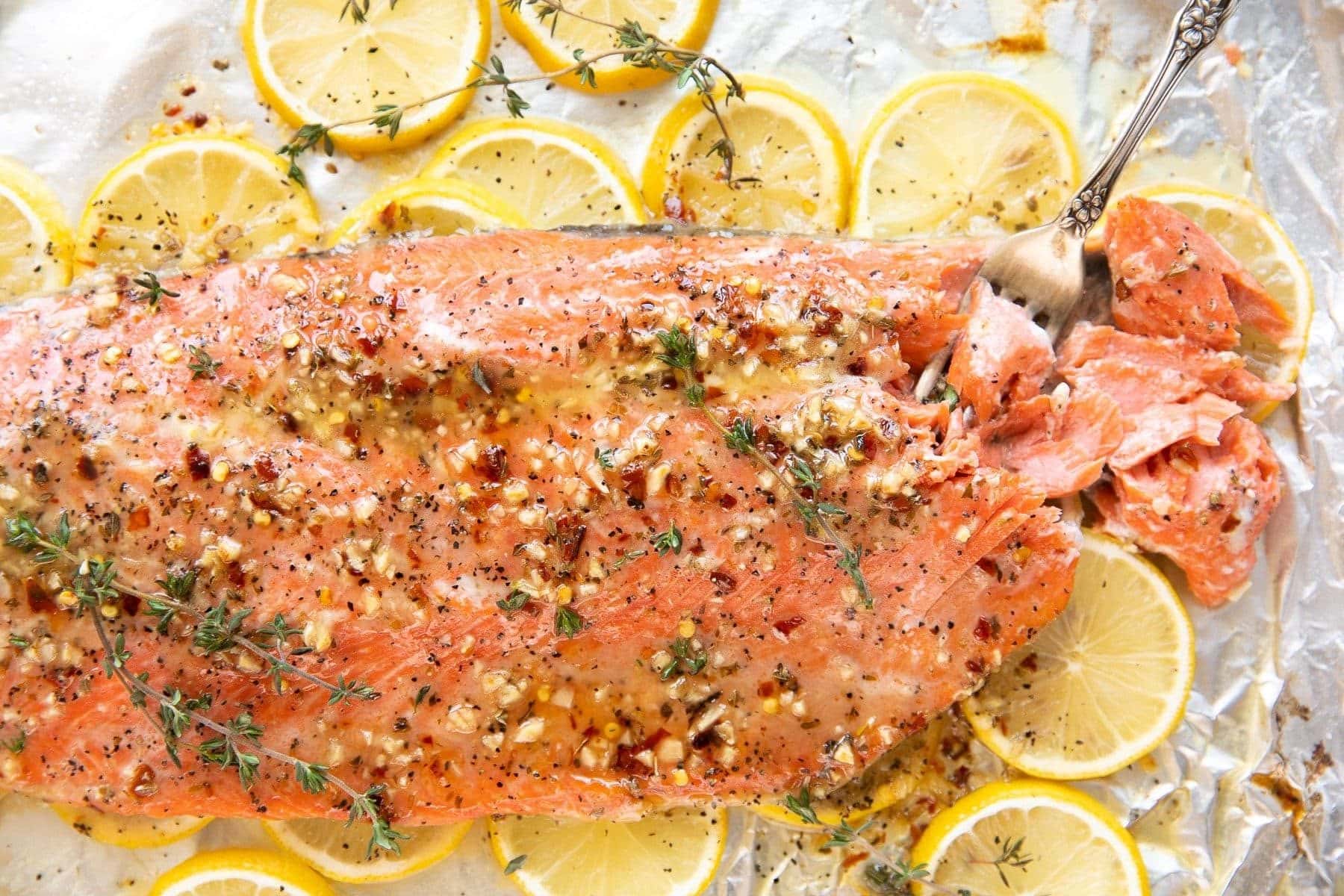
Expert Tips for the Best Baked Salmon
Baking salmon at home is simple, but a few small adjustments can make a big difference in flavor, texture, and overall success.
- Thaw frozen fish: Although it is possible to cook fish from frozen, it will not cook evenly, with some parts overcooked and dry, while other parts remain undercooked or still frozen.
- Bring the salmon to room temperature: Letting salmon rest at room temperature for about 30 minutes before baking ensures it cooks evenly. Baking too-cold salmon can lead to overcooked edges and an undercooked center.
- Bake with the skin on: Keep the salmon skin on and bake it skin-side-down for locked-in moisture. After baking, slide a spatula between the flesh and the skin; the skin should easily slide right off.
- Bake at high heat: Baking salmon at 400°F or higher locks in moisture and enhances flavor. It’s perfect for quick weeknight meals and works exceptionally well with honey or butter-based glazes.
- Bake on lemon slices: A layer of lemon slices under the salmon adds a subtle citrus flavor and keeps the fish from sticking. As the lemons bake, they release steam and oil that infuse the salmon, helping it cook evenly.
Recommended Sides
This flavorful baked salmon recipe pairs well with a variety of sides. Some of my favorite vegetable side dishes include air fried Brussels sprouts, honey-glazed carrots, roasted zucchini, and roasted butternut squash. Include a side of wild rice, creamy mashed potatoes, or soft dinner rolls for a complete meal.
You can also include a side of homemade tartar sauce for dipping.
Got leftovers? Turn them into a quick lunch by flaking it over a green salad, mixing it into a grain bowl with quinoa or rice, or stuffing it into homemade pita bread with tzatziki sauce and fresh veggies. It’s a delicious way to make the most of leftovers.
Frequently Asked Questions
Wild salmon generally has better flavor and firmer texture; it’s my personal preference. In general, wild-caught is more sustainable, though that’s not always the case. If sustainability is important to you, look for certifications like those from the Marine Stewardship Council (MSC) or check the Monterey Bay Aquarium’s Seafood Watch for up-to-date guidance on what’s best to buy in your area. Farmed salmon can still be a good choice, especially if it’s responsibly raised and certified by groups like the Aquaculture Stewardship Council (ASC) or Best Aquaculture Practices (BAP).
Yes. The skin is completely edible and especially delicious when crispy. After removing the skin from the cooked salmon flesh, return it to the oven and continue baking until it reaches your preferred level of crispiness.
Yes, but thawed salmon delivers significantly better texture and more even seasoning. Ideally, thaw frozen salmon in the refrigerator overnight or use the quick thaw method. Place the sealed fillets in a bowl of cold water until thawed, this takes about 30-45 minutes.
No. For this recipe, baking the salmon uncovered allows the butter and honey to caramelize slightly for extra flavor. Baking on a bed of lemon slices helps keep the salmon moist.
Leftovers can be stored in an airtight container in the refrigerator for up to 3 days. To reheat, cover with foil and bake at 300°F for 8-12 minutes or until warmed through. Alternatively, reheat in the microwave on low power, covered with a damp paper towel.
More Salmon Recipes
If you make this oven-baked salmon recipe, I’d love to hear how it turned out in the comment section below! Your review will help other readers in the community. And if you’re hungry for more delicious food inspiration and exclusive content, join my free newsletter here.

Best Oven-Baked Salmon Recipe
Ingredients
- 2½ pound side of salmon fillet, with or without skin
- 4 tablespoon butter, melted
- 3 tablespoon honey, optional
- 2 tablespoon fresh lemon juice, juice from ½ a lemon
- 5 cloves garlic, minced
- ½ teaspoon Italian seasoning
- ½ teaspoon red chili flakes, optional
- ½ teaspoon salt , plus more to taste
- black pepper, to taste
- 1-2 lemons, washed and thinly sliced
- fresh thyme , or fresh parsley, to garnish
Instructions
- Bring salmon to room temperature: If time allows, remove your 2½ pound side of salmon fillet (with or without skin) from the refrigerator about 30 minutes before baking. Let it come to room temperature, then pat dry thoroughly with paper towels.
- Preheat the oven: Preheat your oven to 400°F and position the rack in the center.
- Make the honey garlic butter sauce: In a small bowl, whisk together 4 tablespoons melted butter, 3 tablespoons honey, 2 tablespoons fresh lemon juice (about half a lemon), 5 cloves of minced garlic, ½ teaspoon Italian seasoning, ½ teaspoon red chili flakes (optional), ½ teaspoon salt, and black pepper to taste. Set aside.
- Prepare the baking sheet: Line a large rimmed baking sheet with aluminum foil for easy cleanup. Thinly slice 1–2 lemons and arrange them in a single, non-overlapping layer across the foil.
- Assemble the salmon: Place the salmon, skin-side down, directly on top of the lemon slices. Pour the prepared garlic butter sauce over the salmon and use a spoon or pastry brush to spread it evenly across the entire surface.
- Bake the salmon: Transfer the salmon to the oven and bake for 8–12 minutes, or until the thickest part registers 140–145°F on an instant-read thermometer.
- Garnish and serve: Remove from the oven and garnish with fresh thyme or chopped parsley. Serve immediately with the baked lemon slices.
Notes
- Let the salmon sit at room temperature for 30 minutes before baking—this helps it cook evenly and stay tender.
- If you don’t have a large side of salmon use 4–6 smaller fillets (6 oz each) instead. They’ll cook faster; check for doneness after 6–10 minutes.
- Baking salmon at 400°F ensures a perfectly flaky, juicy texture in just 8–12 minutes. The high heat helps lock in moisture and lightly caramelizes glazes like honey and butter for maximum flavor.
- Baking salmon on a bed of thinly sliced lemons adds bright citrus flavor, prevents sticking, and creates a beautiful presentation – especially when layered with fresh herbs like thyme or parsley.
- Wild salmon is leaner and lower in fat than farmed salmon, which tends to be richer, more oily, and less likely to dry out. Both work in this recipe—just expect a slight difference in flavor and texture.
- To make this dish dairy-free, swap the butter for extra-virgin olive oil or avocado oil.
- The honey and red chili flakes are optional; kip them if you prefer a simpler flavor, or keep them for a sweet-spicy kick.
- Salmon is fully cooked at 145°F, but for a more tender, restaurant-style result, aim for 125–130°F and let it rest briefly before serving.
Nutrition
Nutrition information is automatically calculated, so should only be used as an approximation.
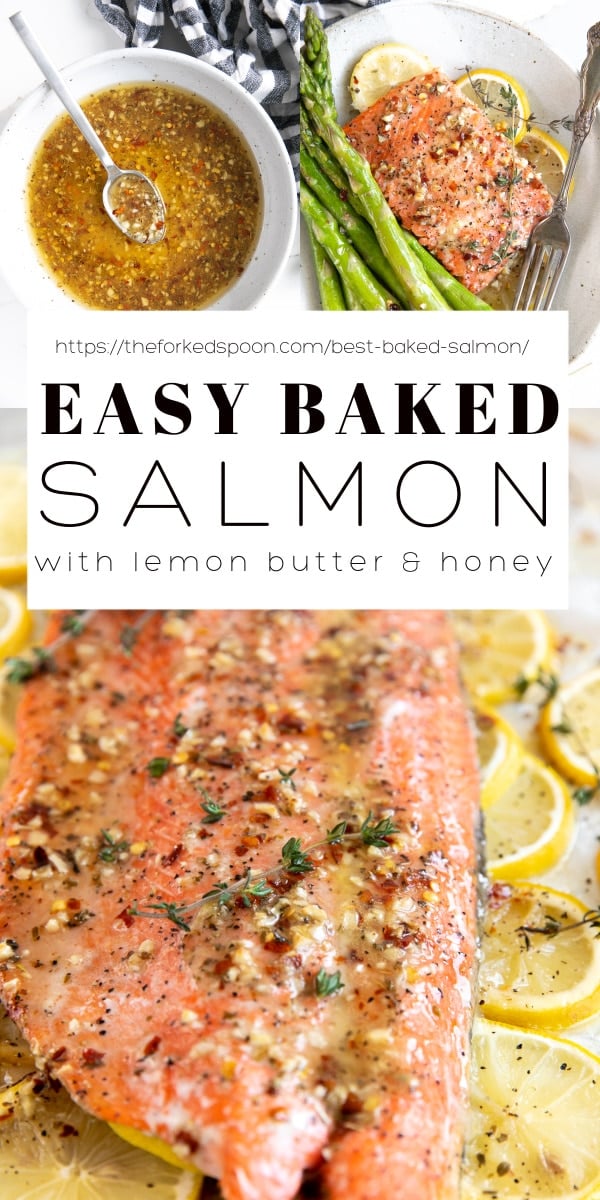
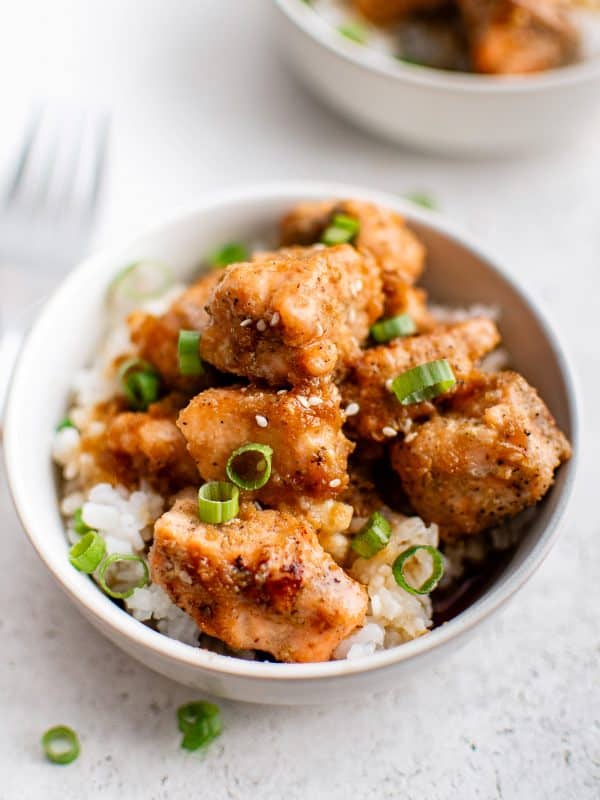




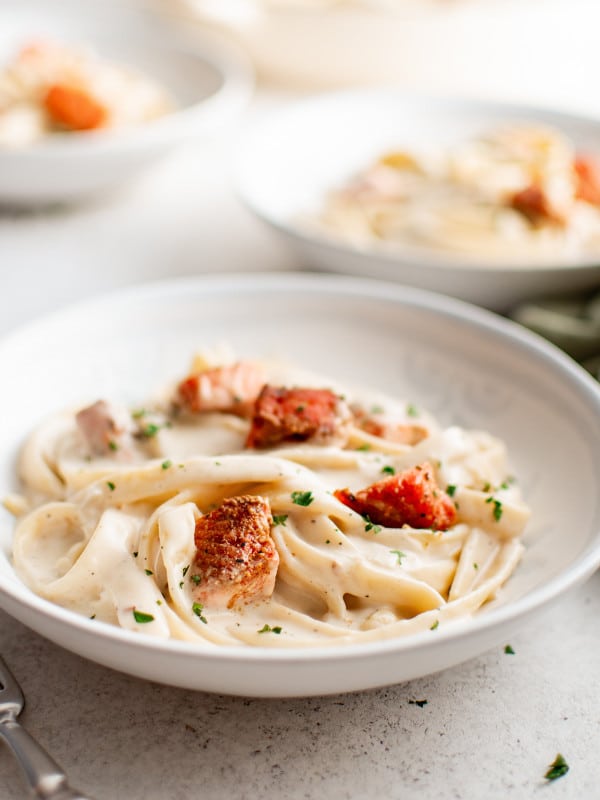

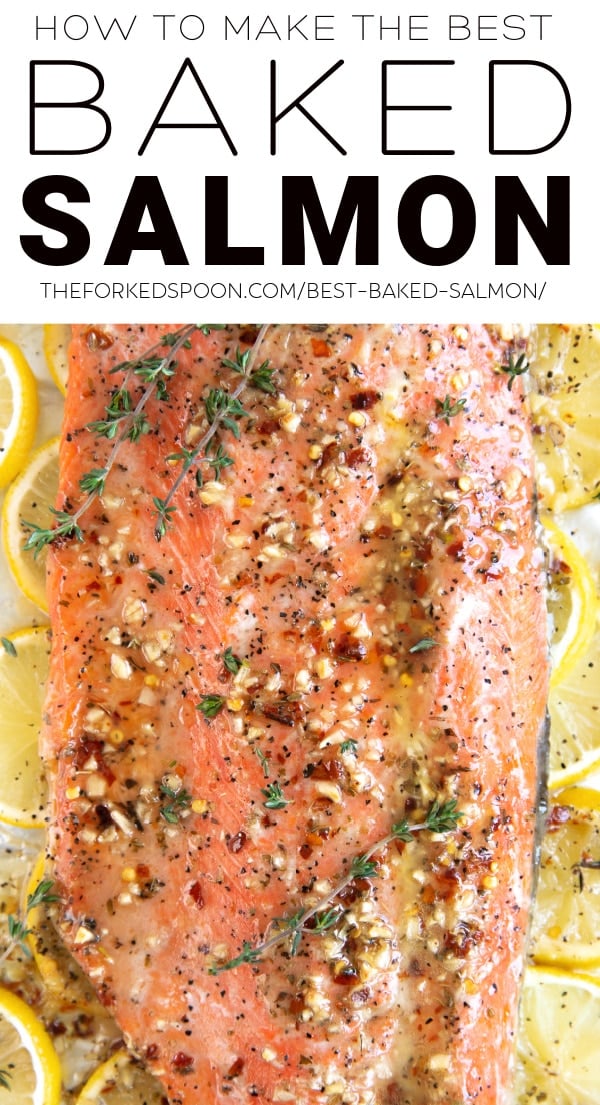

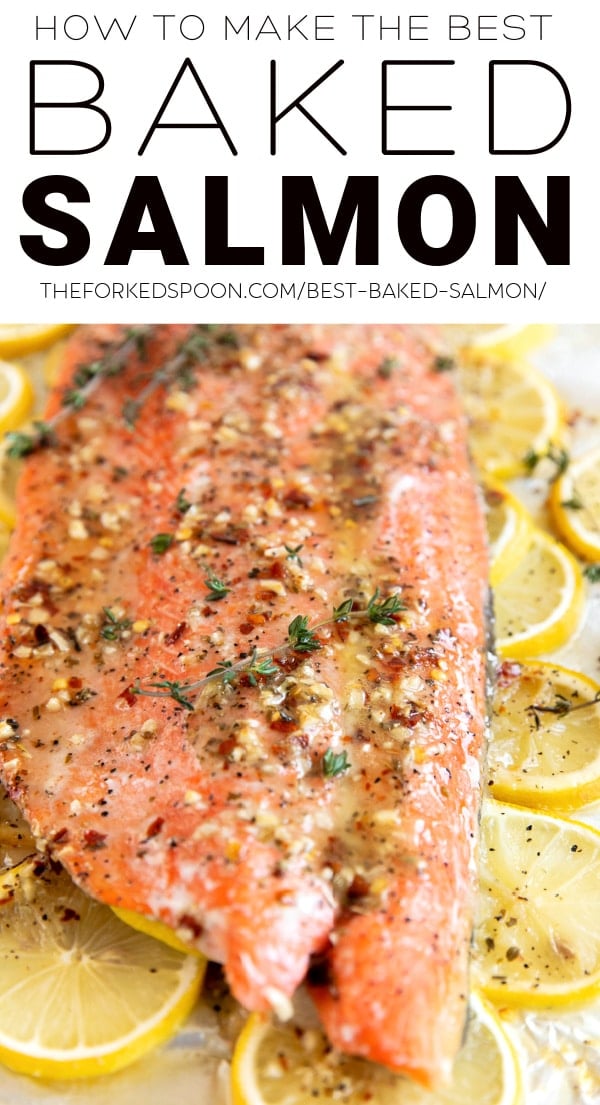
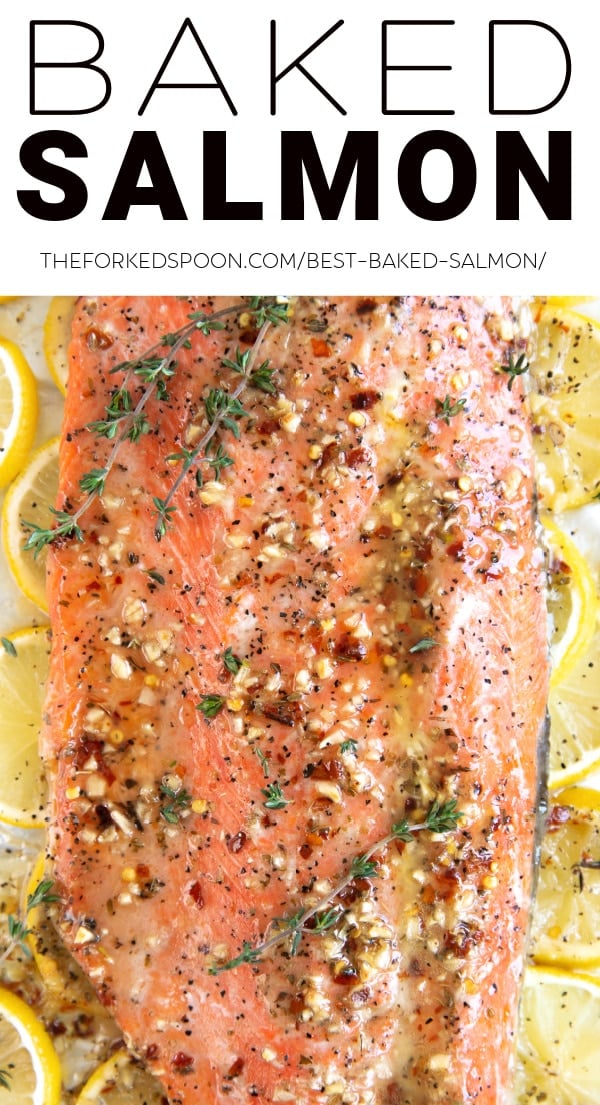

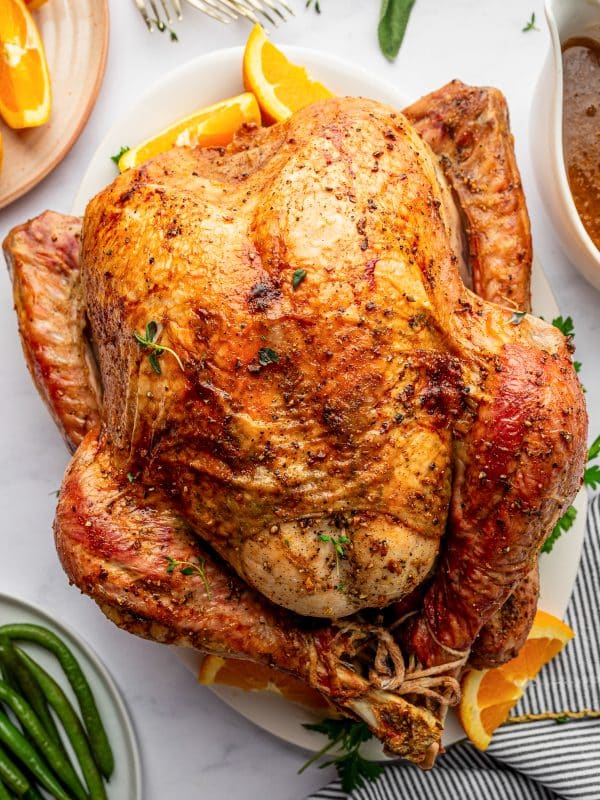
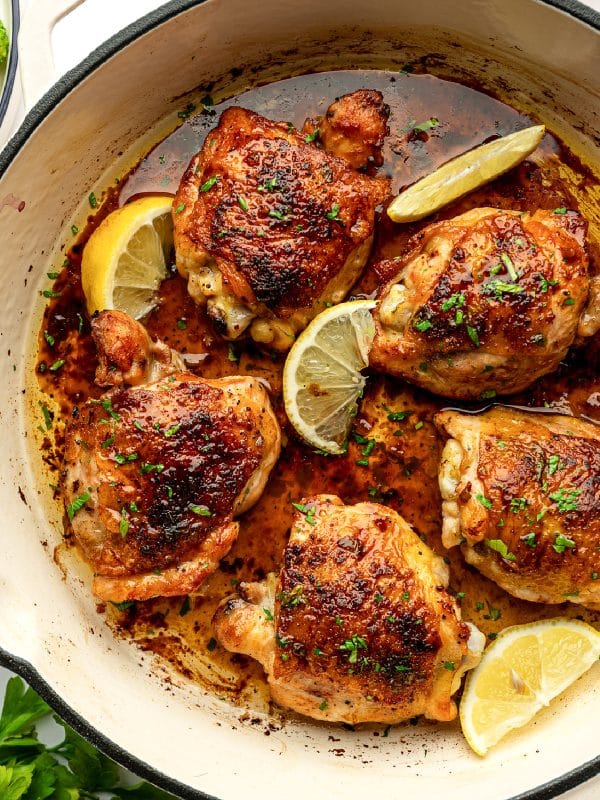
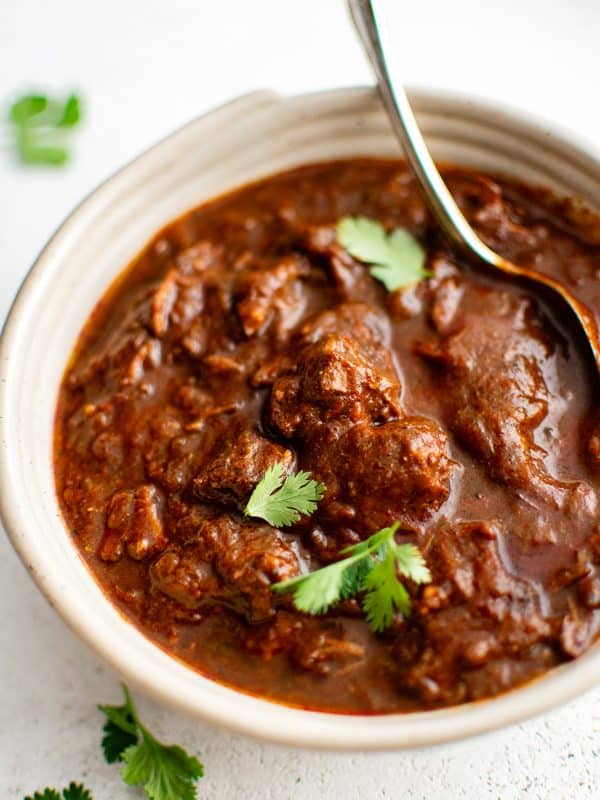
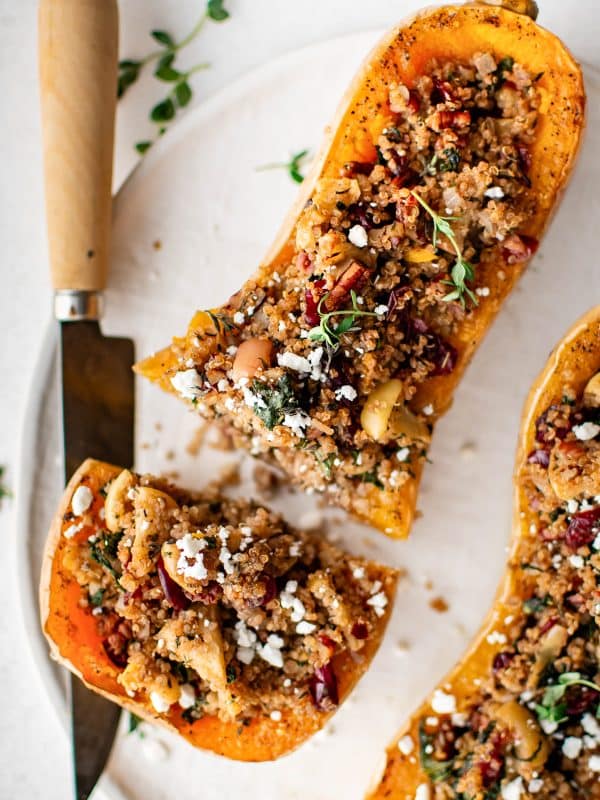








should the salmon be wrapped in foil while it is cooking?
Thanks Vera
No, the foil is to cover the baking tray/sheet 🙂
Husband said it was delicious! He said it taste like lemon and butter with a little sweetness and spice . It was out the fridge 15 minutes before and it still turned out delicious! Used parchment paper. I served it with roasted Brussels sprouts and mashed potatoes. Will make this again!
I am happy to hear you and your husband found this delicious, Ashley 😀
Best salmon marinade I’ve come across. Simple and subtly sweet. I like a recipe that’s not afraid to use sugar or any sweeteners
Thanks for the best feedback and rating, Lydia 🙂
Thank you for sharing your wonderful recipe. Keep up the good work!
The BEST salmon recipe I have tried, and I have tried a few. The lemons under the salmon is truly delicious. Thanks for sharing your recipe.
This dish is fabulous. It would have taken 20 minutes if I had taken the salmon out of the fridge early enough for it to come to room temp, but I didn’t. I accidentally overcooked it a little (150⁰ ), so it was a bit mealy, but the flavor is truly wonderful. I used wildflower honey and the red pepper flakes suggested. It’s the perfect amount of sweet and heat. Will definitely make again!